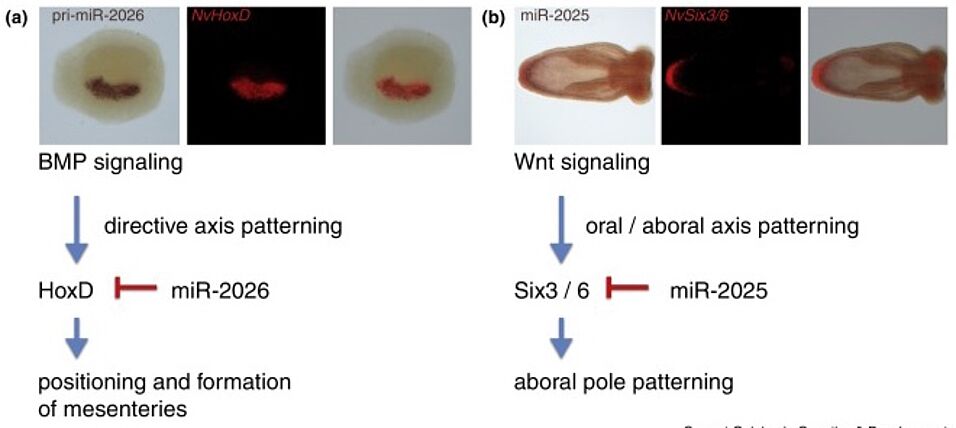Due to their rather simple body plan with only few organs and a low number of cell types, cnidarians have long been recognized as an important animal group for evolutionary comparisons of animal body plans. Recent studies have shown, however, that the genomes of cnidarians and their epigenetic and posttranscriptional regulation are more complex than their morphology might suggest. How these complex genomes are deployed during embryonic development is an open question. With a focus on the sea anemone Nematostella vectensis we describe new findings about the development of the nervous system from neural progenitor cells and how Wnt and BMP signalling control axial patterning. These studies show that beyond evolutionary comparisons, cnidarian model organisms can provide new insights into generic questions in developmental biology.

